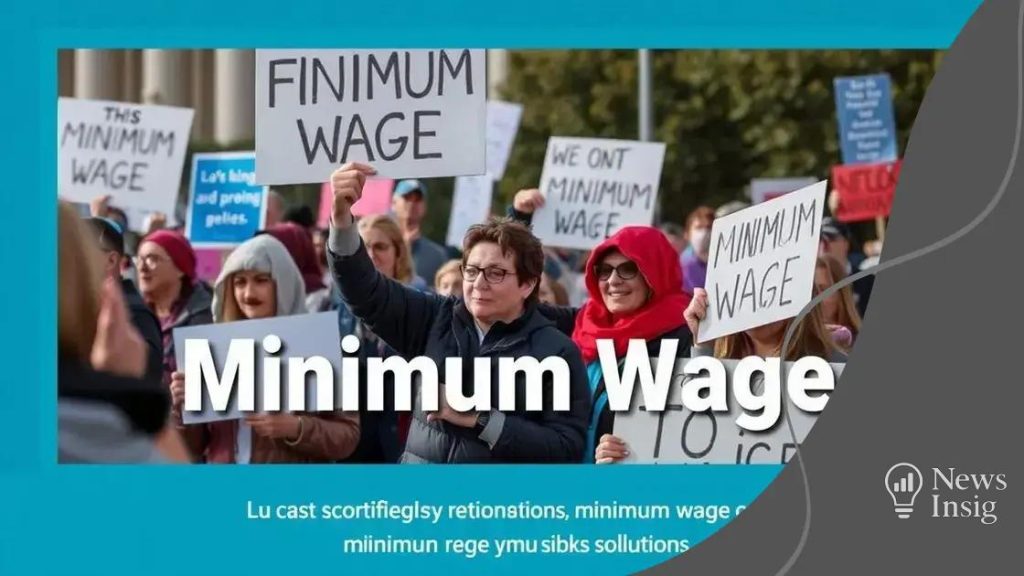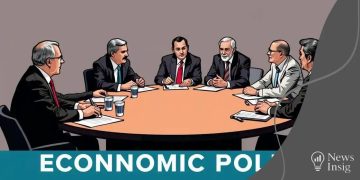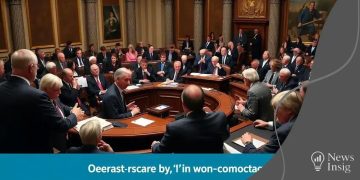Minimum wage debate: Challenging the status quo today

Anúncios
The minimum wage debate revolves around the impact of wage policies on workers, economic growth, and social equity, with discussions focusing on raising wages, living wage standards, and the implications of technology.
In the ongoing minimum wage debate, opinions are divided. Have you ever wondered how wage changes impact not just workers, but the economy at large? Let’s dive into the complexities of this important topic.
Anúncios
Understanding the historical context of minimum wage
Understanding the historical context of minimum wage is crucial for grasping its current implications. Minimum wage has evolved significantly since its inception, reflecting the changing dynamics of society and the economy.
The origins of minimum wage laws
Minimum wage laws were first introduced in the early 20th century to protect workers from exploitation. The Fair Labor Standards Act (FLSA) of 1938 established a federal minimum wage in the United States, aiming to ensure a fair wage for all workers, particularly during the Great Depression.
Key developments and changes
Anúncios
Over the decades, the minimum wage has undergone numerous adjustments. These changes were often influenced by economic conditions and social movements advocating for workers’ rights. Some key developments include:
- The first federal minimum wage was set at 25 cents per hour.
- Adjustments were made periodically to account for inflation.
- Local and state governments also began implementing their own minimum wage laws.
As we moved into the late 20th century, the debate surrounding minimum wage intensified. Advocates argued that raising it would benefit low-income workers, while opponents raised concerns about potential job losses. Many states began to implement their own minimum wage standards, often setting them above the federal level.
Impact of historical events on minimum wage
Events such as economic recessions, technological advancements, and social movements significantly impacted minimum wage legislation. For example, during the 2008 financial crisis, discussions around increasing the federal minimum wage gained momentum as unemployment rates soared. Similarly, grassroots movements like Fight for $15 have played a vital role in raising awareness and pushing for higher wages in recent years.
Today, understanding this historical context helps clarify why the minimum wage debate continues to be relevant. As society changes, so does the conversation around what constitutes a living wage.
Economic implications of changing minimum wage policies
The economic implications of changing minimum wage policies are vast and complex. Adjusting the minimum wage can impact various sectors of the economy, influencing not just wage earners but also businesses and the overall market.
Effects on employment
One of the primary concerns when discussing minimum wage changes is the potential impact on employment. Critics argue that increasing the minimum wage might lead to job losses, particularly in small businesses that struggle to keep up with higher labor costs. However, studies have shown mixed results. In some cases, raising the minimum wage has not led to significant job losses, while in others, employment rates declined.
Consumer spending and economic growth
Higher minimum wages can boost consumer spending. When workers earn more, they are likely to spend more on goods and services, which can help drive economic growth. This increased spending can stimulate demand, leading businesses to hire more employees and potentially expand their operations. Furthermore, areas with higher wage levels often experience lower poverty rates, creating a more prosperous community overall.
- Increased purchasing power among low-income workers.
- Potential for higher demand for local businesses.
- Reduction in reliance on government assistance programs.
However, higher minimum wage policies can also create challenges for businesses. Many companies may respond by raising prices to maintain their profit margins. This can lead to inflation, affecting consumers’ purchasing power over time. As wages rise, companies might also consider automating certain processes, investing in technology to reduce reliance on human labor.
Regional differences in minimum wage impact
The economic impact of minimum wage changes can vary significantly across regions. Areas with a lower cost of living may find it easier to adapt to wage increases compared to those with higher living costs. For instance, a minimum wage of $15 may be sustainable in an urban area with high living expenses, while it could pose challenges in rural areas.
Ultimately, analyzing the economic implications of changing minimum wage policies involves understanding these dynamics. As such changes are contemplated, policymakers must consider both the potential benefits and drawbacks to ensure that wage adjustments benefit workers without destabilizing the economy.
Social effects on low-income workers

The social effects on low-income workers resulting from minimum wage policies are profound and varied. These changes can influence nearly every aspect of their daily lives, affecting their ability to support themselves and their families.
Improved quality of life
One significant impact of increasing the minimum wage is the potential to enhance the overall quality of life for low-income workers. With higher wages, workers can afford better housing, healthier food, and access to education and healthcare. As a result, families may experience less stress, leading to improved physical and mental health.
Community and family stability
Higher wages can lead to greater stability within communities. When low-income workers earn more, they are less likely to rely on social services or government assistance. This independence can foster a sense of pride and accomplishment. Moreover, families may find it easier to stay together, reducing the risk of family disintegration caused by financial stress.
- Workers can invest in their children’s education.
- Stronger local economies due to increased spending.
- Reduced crime rates as financial pressures ease.
When low-income families have more disposable income, they contribute to local businesses. This increased spending can stimulate the economy, resulting in a cycle of positive growth within the community. As businesses grow and succeed, they may even create new job opportunities, further benefiting low-income workers and their families.
Challenges and trade-offs
Despite these advantages, there are challenges associated with raising the minimum wage. Employers may struggle to pay higher wages, which can lead to reductions in hours or even layoffs. This potential downside is an important consideration in the minimum wage debate. The trade-offs often evoke heated discussions around the best ways to support low-income workers while ensuring economic stability.
Ultimately, understanding the social effects on low-income workers is essential in shaping effective wage policies that support their needs while promoting broader economic health.
Arguments for and against raising the minimum wage
When discussing the arguments for and against raising the minimum wage, it is essential to understand both sides of the debate. Supporters and critics provide various reasons and points of view that shape public opinion and policy decisions.
Arguments in favor of raising the minimum wage
Advocates believe that increasing the minimum wage can significantly benefit workers and the economy. Some key points include:
- Reducing poverty rates: Higher wages can lift low-income workers out of poverty, allowing them to provide better living conditions for their families.
- Boosting consumer spending: When workers have more income, they tend to spend more on goods and services, stimulating local businesses and the economy.
- Improving employee morale: A higher minimum wage can lead to better job satisfaction, resulting in lower turnover rates and increased productivity.
By raising wages, employers may foster a more dedicated workforce, as workers feel valued and fairly compensated. This can lead to improved service and quality in various industries.
Arguments against raising the minimum wage
Opponents of raising the minimum wage often cite potential drawbacks. Some of their main concerns are:
- Job losses: Critics argue that raising wages may force businesses to cut jobs, raise prices, or automate certain tasks to control costs.
- Increased inflation: Higher labor costs may lead companies to pass those costs onto consumers, resulting in higher prices on goods and services.
- Regional disparities: The impact of a minimum wage increase can vary significantly between different regions, as some areas may struggle more than others to adapt to wage hikes.
As the debate continues, it becomes increasingly important to weigh the potential benefits of raising wages against the possible economic challenges. Understanding these arguments can help inform discussions about the future of minimum wage policies.
Future trends in the minimum wage debate
The future trends in the minimum wage debate are shaping up to be dynamic and multifaceted. As the economy evolves, so do discussions around wage policies. Many experts predict that this debate will increasingly focus on innovative solutions to balance fair wages with economic stability.
Adoption of a living wage standard
One major trend is the potential movement towards establishing a living wage standard. This concept advocates for wages that reflect the actual cost of living, including housing, food, and healthcare. More cities and states are starting to consider or implement this model, recognizing that the traditional minimum wage may not be sufficient for workers to thrive.
Impact of technology and automation
Another important factor in the future of the minimum wage debate is the rise of technology and automation. As businesses increasingly adopt automation, there are concerns about how this will affect jobs and wage levels. While technology may reduce costs for companies, it may also limit job opportunities for low-income workers. This shift raises essential questions about how to sustain fair wages in a changing labor market.
- Potential for new job types emerging from technological advancements.
- Companies may invest in retraining programs for displaced workers.
- Focus on creating value through human skills that cannot be automated.
Additionally, the conversation around minimum wage will likely be influenced by social movements advocating for worker rights. As workers demand fair compensation, we can expect to see more activism aimed at raising awareness. These social pressures can prompt lawmakers to reconsider existing wage policies and push for higher minimum wage standards.
Regional and global considerations
It’s also essential to consider regional differences in the minimum wage discussion. Some areas may push for higher wages to keep up with urban living costs, while rural areas might be more concerned about the impact of wage increases on small businesses. On a global scale, as countries examine their own minimum wage policies, international comparisons will become more common, influencing domestic debates.
Ultimately, the future of the minimum wage debate will rely on collaboration among policymakers, businesses, and workers to create equitable solutions that reflect the economic realities of today’s society.
In conclusion, the minimum wage debate encompasses numerous perspectives and considerations. As we look to the future, it’s clear that ongoing discussions about wage policies will shape the economic landscape. The movement towards a living wage, the impact of technology, and social advocacy will all play critical roles in this evolving conversation. Employers, workers, and policymakers must collaborate to create fair and just wage solutions that benefit society as a whole. Finding a balance between fair compensation and economic health will be key to ensuring every worker can thrive.
\n\n
\n
FAQ – Frequently Asked Questions about the Minimum Wage Debate
What is the purpose of raising the minimum wage?
The primary goal of raising the minimum wage is to ensure that workers earn enough to cover basic living expenses, reducing poverty and improving quality of life.
How does the minimum wage affect the economy?
Increasing the minimum wage can boost consumer spending, as workers have more disposable income, which stimulates economic growth.
What are the potential drawbacks of raising the minimum wage?
Some argue that raising the minimum wage may lead to job losses or increased prices for consumers, as businesses adjust to higher labor costs.
How do social movements influence minimum wage policies?
Social movements advocate for worker rights and fair wages, raising awareness and pushing lawmakers to reconsider existing wage policies.





